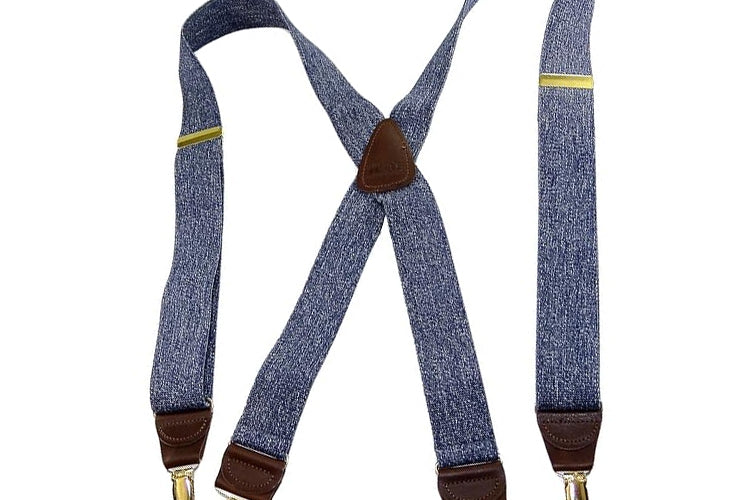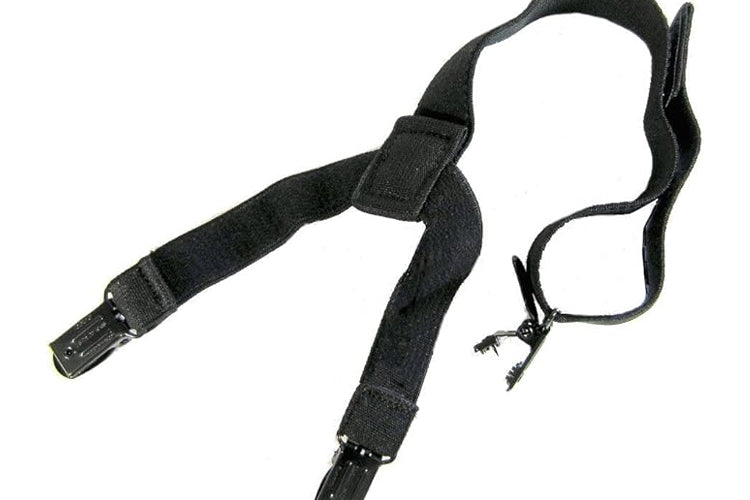Suspenders have made a strong comeback, not just as a nostalgic accessory, but as a mark of refined style. They really elevate any outfit, whether you are dressing up for a wedding, an office event, or even just a casual weekend look. But even the most stylish button suspenders can ruin your look if they don't fit right. A pair that is too tight can pull awkwardly, while one that is too loose loses its function entirely. Mastering the art of adjusting button suspenders is what separates a neat, confident look from a sloppy one.

Why Does Suspender Fit Matter So Much?
The good fit in suspenders is all about balance, both in comfort and appearance. Properly adjusted suspenders should keep your trousers at just the right height without digging into your shoulders. They also help maintain posture and create a tailored silhouette that belts can't achieve. In short, suspenders are not just for holding up your pants; they also enhance the overall structure and elegance of an outfit.
How to Adjust Button Suspenders for the Perfect Fit?
Setting up your button suspenders involves just a few easy, yet precise steps. Once you understand the structure, straps, leather ends, and adjusters, you'll see how easy it is to customize for height, body type, and outfit style.
1. Sew the Buttons Appropriately
Before you make any adjustments, ensure that your suspenders are buttoned correctly. Button suspenders attach directly to buttons sewn inside or outside the waistband of your trousers.
-
Find the buttons: There are usually 6 —two pairs at the front and one at the back.
-
Match the ends: Attach each suspender end to its matching button pair. Ensure the straps aren't twisted before clipping them in place.
-
Check placement: Straps on the back should form either a clean "Y" or "X" at the center of your back, depending on the Y and X style.
Correct buttoning ensures that your suspenders lie flat against your body and that the tension pulls evenly across the straps.
2. Loosen the Front Straps
Once the suspenders are buttoned in, it's time to fine-tune the front straps. Most button suspenders feature sliding metal adjusters or buckles for easy length adjustment.
-
Stand naturally: Keep your posture relaxed. Don't hunch or overly straighten your shoulders.
-
Shorten or lengthen: Adjust the strap length by using the adjuster. What you're aiming for is for your trousers to sit comfortably around your natural waistline, never too high or sagging.
-
Test movement by sitting, bending, and stretching slightly. Your suspenders should flex comfortably without being too tight or slipping. If they ride up when sitting, loosen the straps; if they sag, tighten them for a secure fit.
3. Check Shoulder Positioning
Proper shoulder placement affects both comfort and aesthetics. The straps should run straight over your shoulders, not tilt inward or outward.
-
Align with shoulder width: Straps should rest naturally and should neither cut into your neck nor slide off your arms.
-
Smooth out the fabric: Pull the suspenders slightly to smooth them against your shirt or undershirt. Wrinkled or twisted straps are unsightly and even uncomfortable.
4. Make Small Incremental Adjustments
Suspender adjustment is not something done once and for all. In a few hours of wear, the straps may have slightly shifted or stretched; readjust in small steps, not with drastic changes.
-
Recheck after movement: Walking, sitting, or driving may move the fabric slightly; readjust as necessary.
-
Mark your ideal length: Some suspenders will stretch naturally over time; marking them helps ensure consistency.
The right button placement and suspender adjustment ensure your trousers hang neatly and remain comfortable throughout the day.
5. Consider Your Outfit and Occasion
Suspenders do not fit everyone the same way; you should adjust them based on your outfit and where you are going.
-
Keep them close, but not too tight: you want your trousers to look sharp. The front straps should hang straight down.
-
For a casual look, loosen the suspenders slightly for a relaxed style.
-
For layering: If you wear a waistcoat or jacket, ensure the suspenders lie flat underneath and do not bunch up your shirt.
6. Maintain the Straps for Longevity
Adjustment also involves proper suspender care. Leather or elastic straps can lose tension over time if not handled properly.
Avoid overstretching, because pulling too tightly can distort the elastic fibers.
Wipe leather ends with a damp cloth or condition occasionally. Hang them or lay them straight to prevent twisting or bending.
Proper maintenance will help your suspenders retain both form and function for years to come.
Conclusion
A pair of button suspenders, when adjusted correctly, can make a big difference not only in attire but also in confidence. They truly represent a blend of timeless fashion and functional precision. Spend a few minutes adjusting them with care every time you dress, and you'll walk out sharp, composed, and perfectly fitted.
Frequently Asked Questions
How tight should button suspenders be?
It should be tight enough to hold up your trousers without impeding your movements or pressing into your shoulders.
Can I wear suspenders with any type of pants?
Button suspenders work best with trousers designed with suspender buttons, though you can have buttons added by a tailor if needed.
Should suspenders go over or under a vest?
Traditionally, they go under a vest or a jacket for that refined, seamless look, but for casual outfits, they're normally worn over the shirt, and this adds to the charm.
How do I know if my suspenders are the right length?
Trousers should sit at the natural waistline when standing straight, and the straps should be put comfortably on your shoulders and never sag or pull.
Do button suspenders stretch over time?
Yes, elastic suspenders will stretch over time. Check them from time to time and readjust when you prefer a certain fit.





